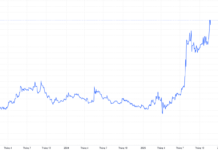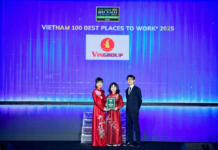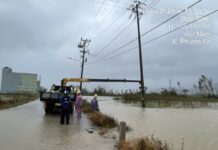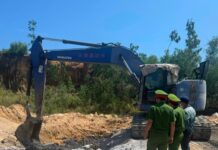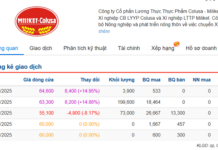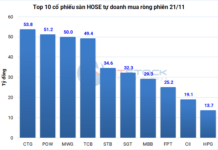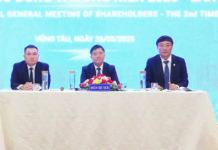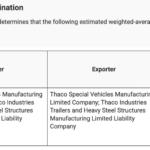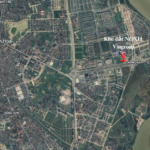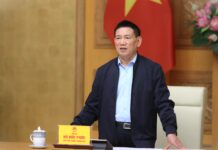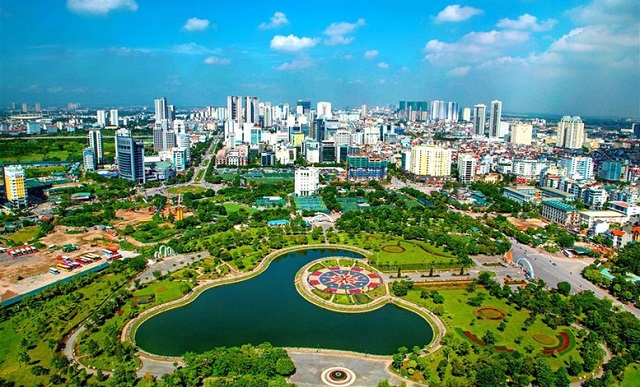
Adjusting the National Master Plan for the 2021-2030 period, with a vision towards 2050.
|
Economically, the resolution sets a target of striving for an average GDP growth rate of over 8.0% per year during the 2021-2030 period. By 2030, the GDP per capita at current prices is expected to reach approximately $8,500.
The service sector’s share in GDP is projected to exceed 50%, the industrial and construction sector over 40%, and the agriculture, forestry, and fisheries sector below 10%. The average social labor productivity growth rate is targeted at around 7% per year from 2021 to 2030, with the 2026-2030 period aiming for over 8.5% per year. The contribution of total factor productivity (TFP) to growth is expected to surpass 55%.
Strong development of digital infrastructure and data infrastructure will lay the foundation for national digital transformation, fostering the growth of e-government, digital economy, and digital society. The digital economy is anticipated to account for approximately 30% of GDP…
Socially, the resolution emphasizes maintaining a stable replacement fertility rate (an average of 2.1 children per woman of reproductive age) and a population size of around 105 million. The Human Development Index (HDI) is targeted to reach approximately 0.78, with an average life expectancy of around 75.5 years. The agricultural labor force as a proportion of total social labor is expected to drop below 20%. Enhancing job quality and maintaining a reasonable unemployment rate are also key focuses.
Vietnam’s education system aims to achieve advanced regional standards, ranking among the top 10 Asian countries with the best higher education systems. The goal is to have at least 8 higher education institutions in the top 200 Asian universities and at least 1 institution in the global top 100 in specific fields, as recognized by reputable international rankings.
Healthcare services will be elevated to match the standards of advanced regional countries. A national healthcare network will be developed to meet the needs of healthcare, protection, and health promotion for the entire population.
A healthy cultural environment will be fostered across all social spheres. A national cultural infrastructure network will be developed to ensure effective preservation and promotion of ethnic cultural values, driving the growth of the cultural industry…
Key Focus Areas During the Planning Period
A central task during this planning period is the establishment of a basic national infrastructure framework, focusing on transportation, urban, rural, energy, digital, cultural, social, irrigation, environmental protection, disaster prevention, and climate change adaptation infrastructure…
The resolution outlines the socio-economic spatial development orientation, including economic-social zoning, regional development and linkage directions, the development of national growth poles and dynamic regions, and the establishment of economic corridors.
Regarding the development of dynamic regions, the resolution specifies the selection of the most favorable locations across regions to form national dynamic regions.
Specifically, the Northern Dynamic Region will encompass Hanoi and areas along Ring Road 4, Ring Road 5, National Highway 5, National Highway 18, and expressways CT01, CT04, CT05, CT07, and CT09, including Haiphong and the provinces of Bac Ninh, Thai Nguyen, Phu Tho, Ninh Binh, Hung Yen, and Quang Ninh, with Hanoi as the growth pole.
The Northern Dynamic Region will lead in developing high-quality human resources, science, technology, innovation, digital economy, and digital society, while enhancing its role as the national center for economics, culture, education, healthcare, science, technology, and innovation…
The Southern Dynamic Region will cover areas along National Highway 22, National Highway 13, National Highway 1, National Highway 51, the Western North-South Expressway, and Ring Road 4, including Ho Chi Minh City and the provinces of Dong Nai and Tay Ninh, with HCMC as the growth pole. Post-2030, the region’s scope may be expanded.
The Southern Dynamic Region aims to lead the nation and become a Southeast Asian leader in economics, finance, trade, services, healthcare, education, high-quality human resource development, science, technology, innovation, and digital transformation. It will focus on developing a robust innovation ecosystem, spearheading growth model transformation, and building a digital economy and society.
Key development areas include financial services, banking, science, technology, and logistics. Ho Chi Minh City will be developed into an international financial center, aiming to become a leading global financial hub and elevate Vietnam’s position in the global financial network, aligned with economic growth drivers…
The Central Dynamic Region will include coastal areas of Hue, Da Nang, Quang Ngai, and Gia Lai, with Da Nang as the growth pole…
The Mekong Delta Dynamic Region will cover Can Tho and the provinces of An Giang, Vinh Long, and Dong Thap, connected by expressways (Can Tho – Vinh Long section of the Eastern North-South Expressway, An Huu – Cao Lanh Expressway, Western North-South Expressway from Cao Lanh to Rach Soi, Chau Doc – Can Tho – Soc Trang Expressway, and Ha Tien – Rach Gia – Bac Lieu Expressway) and the Phu Quoc Special Economic Zone, with Can Tho as the growth pole. Post-2030, the region may expand to include the Tran De seaport.
The Mekong Delta Dynamic Region aims to become a national hub for services, tourism, logistics, and agriculture-supporting industries. It will establish agricultural centers linked to specialized farming areas and become a national leader in agricultural science, technology, innovation, and related services. Focus will also be on marine economic development, particularly transforming Phu Quoc (An Giang Province) into an internationally recognized eco-tourism and marine services center, connected to major regional and global economic hubs.
The North Central Dynamic Region will span areas along the Eastern North-South Expressway, National Highway 1, and the coastal road, linked to central provincial cities, coastal tourism hubs, and coastal economic zones in Thanh Hoa, Nghe An, and Ha Tinh.
This region aims to become a national center for petrochemical, metallurgical, mechanical engineering, automotive, and supporting industries, while rapidly developing new sectors like electronics, semiconductors, artificial intelligence, digital technology, and high-tech industries. These efforts will drive socio-economic growth across the region…
Additionally, gradual development of dynamic regions in the South Central Coast and Central Highlands (Khanh Hoa, Lam Dong, and surrounding areas) is planned.
– 09:50 07/10/2025
Unveiling the Billion-Dollar Concealment Tactics of Hoang Huong’s Ecosystem
An initial investigation revealed that, between 2021 and 2025, the violations committed by Hoang Huong and her accomplices resulted in hundreds of billions of Vietnamese dong in value-added tax losses for the state budget.
Shaping Vietnam’s Multi-Billion Dollar Digital Capital Flow
With tens of billions of dollars in annual transactions and millions of participants, Vietnam’s cryptocurrency market urgently requires a transparent legal framework.






